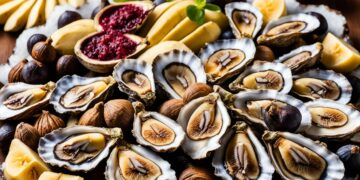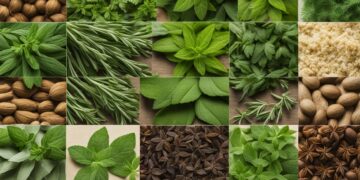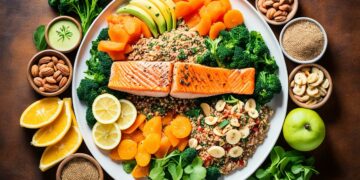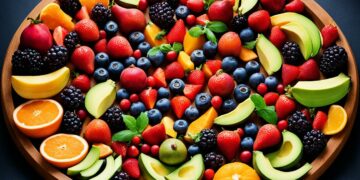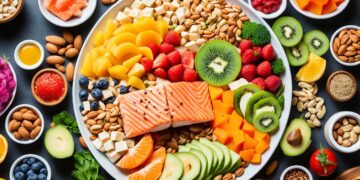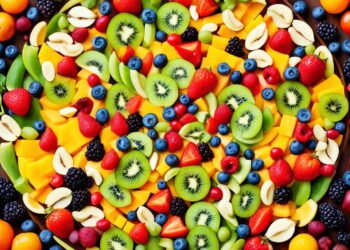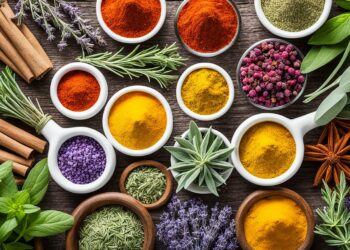Rutabagas, often overlooked but incredibly nutritious, offer a range of health benefits. These versatile root vegetables have a distinct flavor profile, ranging from slightly sweet to mildly peppery, and their texture transforms from crisp to creamy when cooked.
Packed with essential nutrients, rutabagas are a great addition to a healthy diet. They are rich in vitamin C, potassium, magnesium, and fiber, all of which contribute to their numerous health benefits.
Key Takeaways:
- Rutabagas are a versatile and nutritious vegetable often overlooked.
- They have a unique flavor profile, ranging from slightly sweet to mildly peppery.
- Rutabagas are rich in essential nutrients like vitamin C, potassium, magnesium, and fiber.
- These nutrients support digestive health, boost immunity, and aid in weight management.
- Incorporating rutabagas into your diet can provide a range of health benefits.
What Does Rutabaga Taste Like?
Rutabagas have a slightly sweet, nutty, and peppery taste. When raw, they are crisp like a radish or carrot with a gentle sweetness. When cooked, they become sweeter and develop mild peppery notes.
The flavor of rutabagas can be enhanced or balanced depending on the cooking method and other ingredients used. Rutabagas can be both sweet and savory, offering versatility in the kitchen.
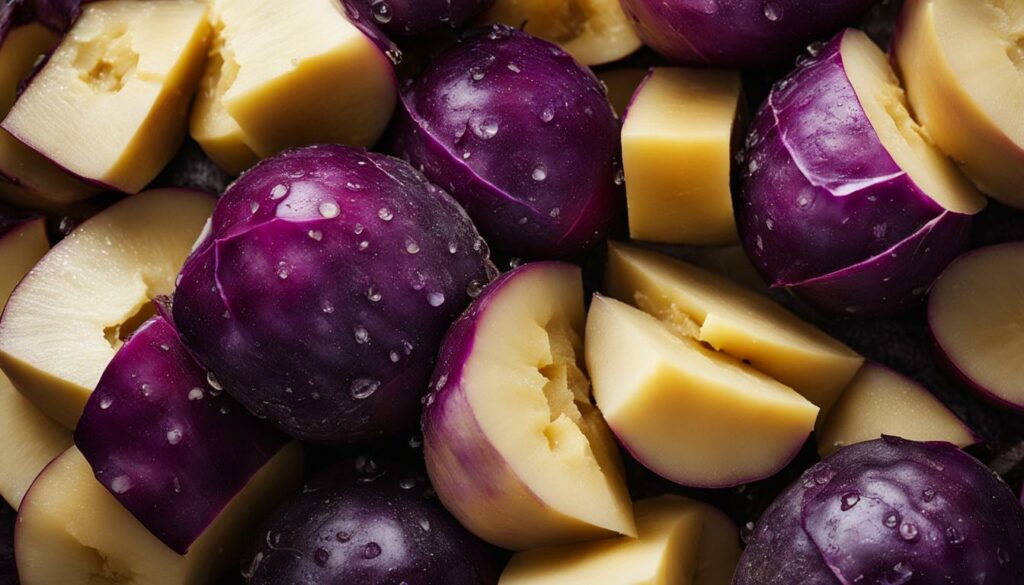
| Taste Profile | Description |
|---|---|
| Slightly Sweet | Rutabagas have a natural sweetness that intensifies when cooked. |
| Nutty | Rutabagas have a subtle nutty flavor that adds depth to dishes. |
| Peppery | Rutabagas have a mild peppery taste that provides a pleasant spice. |
Enhancing Rutabaga Flavor
To enhance the flavor of rutabagas, you can consider:
- Roasting rutabagas to bring out their natural sweetness.
- Adding herbs such as rosemary or thyme to complement their earthy taste.
- Using spices like black pepper or paprika to add warmth and depth.
- Pairing rutabagas with ingredients that have contrasting flavors, such as tangy citrus or savory bacon.
Cooking and Culinary Uses of Rutabagas
Rutabagas are a versatile vegetable that can be enjoyed both raw and cooked. When consumed raw, they offer a mildly sweet and crisp texture, reminiscent of a water chestnut.
This makes them a great addition to salads or as vegetable sticks for dipping. However, the real culinary magic happens when rutabagas are cooked, unlocking their full potential.
One popular cooking method for rutabagas is roasting. Roasting enhances their natural sweetness and brings out their earthy flavors. Simply toss cubed rutabagas with olive oil, salt, and pepper, and roast them in the oven until golden brown and caramelized. The result is a delicious side dish or a flavorful addition to a vegetable medley.
Boiling and mashing rutabagas is another classic cooking technique that transforms their texture and creates a comforting dish. Boil peeled and cubed rutabagas until tender, then mash them with butter, salt, and spices like nutmeg or thyme.
The creamy and smooth consistency pairs perfectly with roasted meats or can be enjoyed on its own.
If you’re looking for a crispy treat, frying rutabagas is a fantastic option. Slice rutabagas into thin rounds or julienne them into fries, then fry them until golden and crispy. Sprinkle them with salt and your favorite spices for an addictive snack or a unique twist on traditional french fries.
Rutabagas also lend themselves well to baking. Incorporate grated rutabagas into savory muffins or quiches for added flavor and moisture. They can also be used in breakfast dishes like rutabaga hash browns or rutabaga pancakes, offering a unique and nutritious twist to your morning meal.
Rutabagas are a versatile ingredient in various recipes, such as stews, casseroles, and soups. Their slightly sweet and earthy flavor adds depth to these dishes, making them even more satisfying and flavorful.
To explore the culinary world of rutabagas, try these delicious recipes:
- Rutabaga Mash with Garlic and Thyme
- Roasted Rutabaga and Carrot Medley
- Crispy Rutabaga Fries with Rosemary Salt
- Hearty Rutabaga Soup with Bacon and Kale
Don’t be afraid to experiment and get creative with rutabagas in the kitchen. Their unique flavor and texture make them a versatile and exciting ingredient to work with.
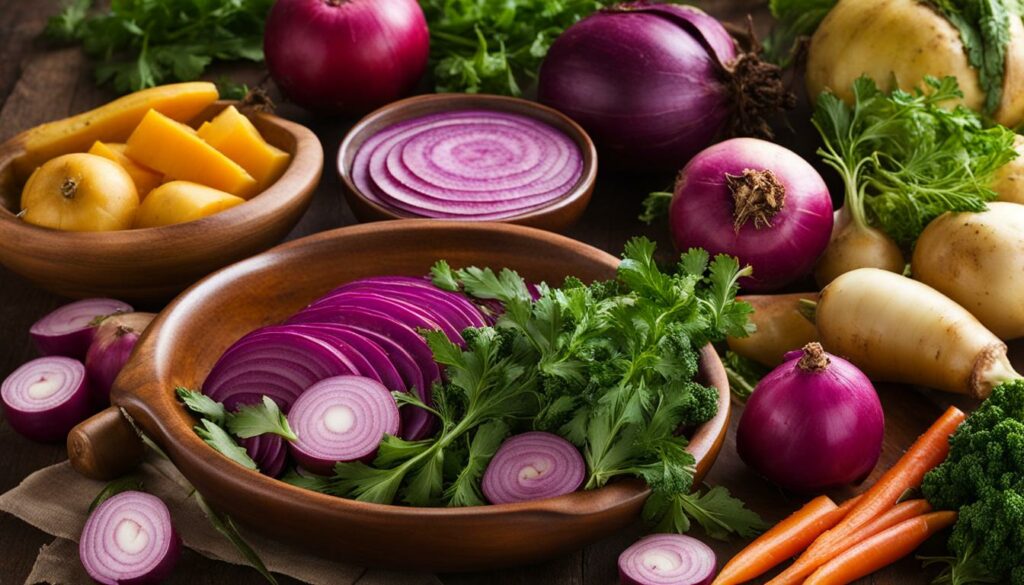
Tips for Cooking Rutabagas:
- Choose rutabagas that are firm, heavy for their size, and have smooth skin.
- Peel rutabagas before cooking to remove the tough outer layer.
- Cut rutabagas into cubes, slices, or julienne according to the recipe.
- Experiment with different cooking methods like roasting, boiling, mashing, frying, and baking.
- Enhance the flavor of rutabagas with seasonings and herbs like garlic, black pepper, and thyme.
- Adjust the cooking time and temperature based on your desired texture, whether you prefer them crispy or soft.
Fun Fact:
Rutabagas are a staple in Scandinavian cuisine and are often used in traditional dishes like the Swedish dish “rotmos,” a combination of mashed rutabagas and potatoes served with meat.
Health Benefits of Rutabaga Nutrition
Rutabagas are an often overlooked vegetable that packs a powerful nutritional punch. These root vegetables offer a variety of health benefits that make them a valuable addition to any diet.
Here are some of the key health benefits of rutabaga nutrition:
- Vitamin C: Rutabagas are an excellent source of vitamin C, with just one cup providing over half of the daily recommended intake. Vitamin C is essential for a strong immune system and plays a crucial role in maintaining healthy skin.
- Potassium: These hearty vegetables also contain potassium, a mineral that supports heart health and helps regulate blood pressure.
- Magnesium: Rutabagas are a good source of magnesium, which is involved in energy production, muscle movement, and maintaining healthy bone structure.
- Calcium: While not as high in calcium as dairy products, rutabagas still contribute to your daily calcium intake, which is important for strong bones and teeth.
- Fiber: Rutabagas are a great source of dietary fiber, which aids in digestion and can help regulate blood sugar levels. Additionally, the fiber content can contribute to healthy weight management.
By incorporating rutabagas into your meals, you can enjoy these various health benefits while adding delicious and nutritious flavors to your plate.
Improve Your Immune System with Vitamin C
Vitamin C is well-known for its immune-boosting properties, and rutabagas are an excellent source of this vital nutrient. A strong immune system is crucial for staying healthy and fighting off illnesses and infections. By including rutabagas in your diet, you can give your body the extra support it needs to stay resilient.
Support Heart Health with Potassium
Potassium is essential for maintaining a healthy heart. It helps regulate blood pressure, reduces the risk of stroke, and supports proper heart muscle function. Rutabagas provide a significant amount of potassium, making them a heart-healthy addition to your meals.
Aid in Energy Production and Muscle Movement with Magnesium
Rutabagas contain magnesium, a mineral that plays a crucial role in energy production and muscle movement. Magnesium helps convert food into energy, supports nerve function, and contributes to overall muscle health. Including rutabagas in your diet can help ensure that your body has the magnesium it needs to function optimally.
Promote Digestive Health and Weight Management with Fiber
The fiber content in rutabagas promotes healthy digestion and aids in weight management. Fiber adds bulk to the diet, helping prevent constipation and maintaining bowel regularity. Additionally, fiber-rich foods like rutabagas can help you feel fuller for longer, reducing the likelihood of overeating and supporting healthy weight management.
| Nutrient | Amount per Cup (Approx.) |
|---|---|
| Vitamin C | Over 50% of the daily recommended intake |
| Potassium | Approximately 15% of the daily recommended intake |
| Magnesium | Approximately 10% of the daily recommended intake |
| Calcium | Approximately 5% of the daily recommended intake |
| Fiber | Approximately 10% of the daily recommended intake |
Mastering the Art of Cooking Rutabaga
When it comes to cooking rutabagas, a little preparation and knowledge can go a long way. Follow these expert tips and techniques to unleash the full flavor and potential of this versatile vegetable.
1. Choosing the Right Rutabagas: Select rutabagas that are heavy for their size and have smooth, blemish-free skin. This ensures freshness and optimal taste for your dishes.
2. Prepping Rutabagas: Before cooking, peel the rutabagas using a vegetable peeler or knife. This helps remove the tough outer skin and reveals the tender flesh inside. Once peeled, you can cut rutabagas into cubes or slices, depending on the recipe requirements.
3. Boiling Rutabagas: Boiling rutabagas is a simple and quick cooking method. Add peeled and cubed rutabagas to a pot of boiling water and cook until tender. This is a great technique for making purees or adding rutabagas to soups and stews.
4. Roasting Rutabagas: Roasting rutabagas brings out their natural sweetness and enhances their flavors. Toss peeled and cubed rutabagas with olive oil, salt, and pepper. Spread them in a single layer on a baking sheet and roast in a preheated oven until golden and caramelized. This method works well for side dishes or as a tasty addition to roasted vegetable medleys.
5. Mashing Rutabagas: Mashing rutabagas creates a creamy and comforting side dish. Boil peeled and cubed rutabagas until tender, then drain and mash with butter, salt, and pepper. For extra flavor, add garlic or other herbs to the mashed rutabagas.
6. Frying Rutabagas: Frying rutabagas adds a crispy texture and a delightful caramelized flavor. Peel and slice rutabagas into thin rounds or matchsticks. Heat oil in a skillet and fry the rutabagas until golden and crispy. Sprinkle with salt and your favorite seasonings for a tasty snack or side dish.
7. Baking Rutabagas: Baking rutabagas offers a different way to enjoy this nutritious vegetable. Slice peeled rutabagas into thick rounds, toss with olive oil, and season with herbs and spices. Arrange the slices on a baking sheet and bake in a preheated oven until tender and slightly caramelized. Baked rutabagas make a delicious side dish or can be used as a flavorful layer in gratins or casseroles.
To complement the natural flavors of rutabagas, try seasoning them with garlic, black pepper, thyme, rosemary, or other herbs and spices. Experiment with different cooking techniques to discover your favorite rutabaga recipes.
Whether you’re boiling, roasting, mashing, frying, or baking rutabagas, the balance of sweet and savory flavors and the change in texture make these dishes a delight to the taste buds. Get creative in the kitchen and enjoy the culinary possibilities of rutabagas!
Conclusion
In conclusion, rutabagas are a highly versatile vegetable with numerous nutritional benefits. They offer a unique flavor profile, ranging from slightly sweet to mildly peppery, and their texture transforms from crisp to creamy when cooked.
Rutabagas are packed with essential nutrients like vitamin C, potassium, magnesium, and fiber, which contribute to their health benefits.
By incorporating rutabagas into your diet, you can support digestive health, boost your immunity, and aid in weight management. These root vegetables can be enjoyed in various ways, whether raw or cooked. They can be roasted, boiled, mashed, fried, or baked, according to your preference. Rutabagas are a valuable addition to any recipe, as they enhance flavors and provide valuable nutrients.
Overall, rutabagas are an excellent choice for those seeking a nutritious and delicious vegetable to add to their meals. Their versatility in cooking allows for endless culinary creations, while their nutritional content promotes overall well-being.
Don’t miss out on the rutabaga’s nutritional benefits and the excitement it brings to the table. Start exploring its versatility in the kitchen and unlock its full potential today!
FAQ
What are the health benefits of eating rutabagas?
Rutabagas are rich in nutrients such as vitamin C, potassium, magnesium, and fiber, which contribute to various health benefits. These include supporting digestion, boosting immunity, and aiding in weight management.
What does rutabaga taste like?
Rutabagas have a slightly sweet, nutty, and peppery taste. When raw, they are crisp with a gentle sweetness. When cooked, they become sweeter and develop mild peppery notes.
How can rutabagas be prepared and used in cooking?
Rutabagas can be consumed both raw and cooked. When eaten raw, they can be added to salads or used as vegetable sticks for dips. When cooked, they can be roasted, boiled, mashed, fried, or baked. Rutabagas are versatile and can be used in various dishes, including breakfast dishes, stews, casseroles, and soups, enhancing flavors and adding a unique texture.
What are the nutritional benefits of rutabagas?
Rutabagas are a nutrient-rich vegetable. They are an excellent source of vitamin C and also provide potassium, magnesium, calcium, and fiber while being low in calories. Vitamin C boosts the immune system, potassium supports heart health, and magnesium aids in energy production and muscle movement.
The fiber content in rutabagas promotes digestive health and aids in weight management.
How should rutabagas be prepared before cooking?
Before cooking rutabagas, it’s important to choose ones that are heavy for their size and have smooth, blemish-free skin. Rutabagas are usually peeled before cooking, and they can be cut into cubes or slices. They pair well with a variety of seasonings and herbs, such as garlic, black pepper, and olive oil.
Why should rutabagas be included in a healthy diet?
Rutabagas are a versatile and nutritious vegetable, offering a range of health benefits. Incorporating rutabagas into meals can contribute to overall well-being, while adding variety and taste to dishes.


